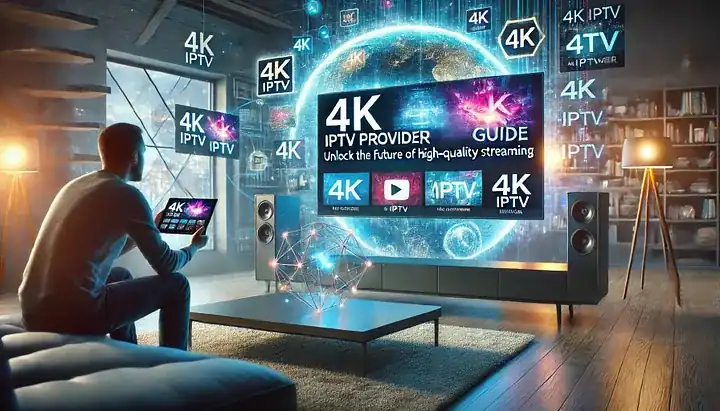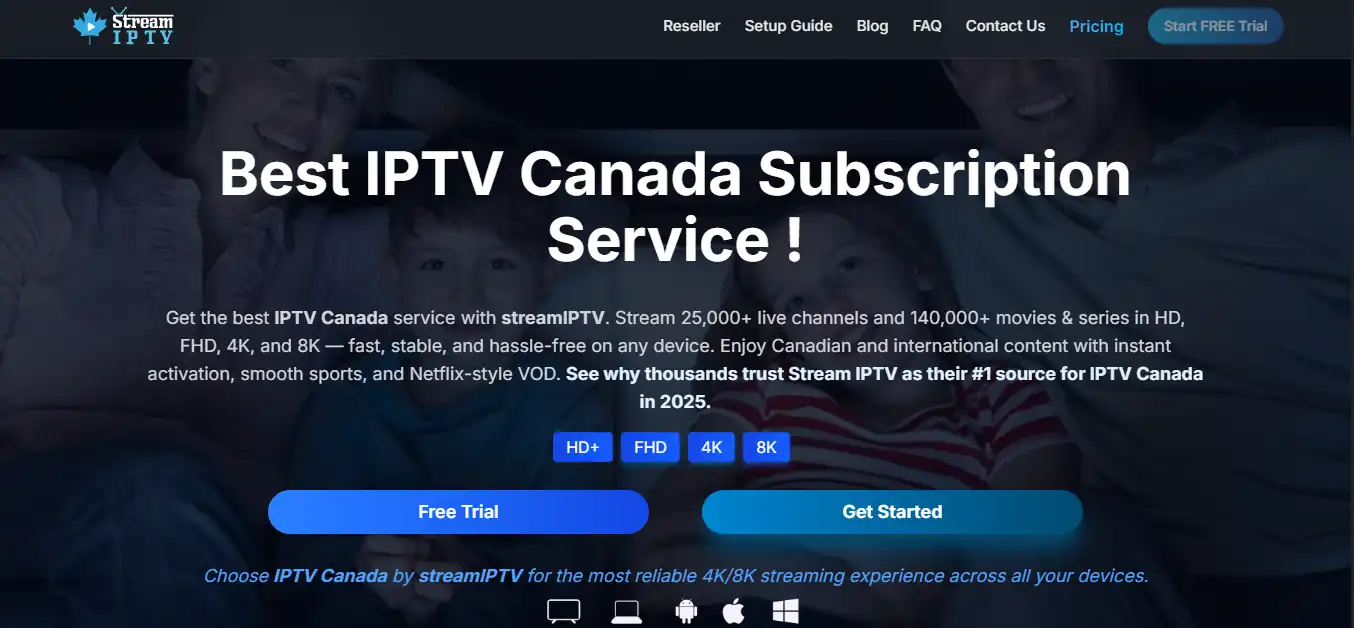What is IPTV 4K and why it matters
IPTV 4K describes television and video services delivered over the internet that support ultra-high-definition (3840 × 2160) resolution. Unlike legacy cable systems, IPTV 4K uses internet protocol streaming to deliver live channels, on-demand movies, and series with much higher detail and color depth. For viewers who want superior picture quality without long cable contracts, IPTV 4K is the obvious solution — especially when paired with a trusted provider like streamiptv

How IPTV 4K works — the simple flow
The IPTV 4K workflow is straightforward:
- Content is produced or aggregated by rights holders and streaming networks.
- Video is encoded and packaged in 4K (HEVC/H.265 or AV1 are common codecs).
- The 4K stream is delivered over the internet through CDNs and streaming servers.
- Your device (smart TV, set-top, streaming stick, or app) decodes the stream and displays it at 4K resolution.
Providers such as streamiptv optimize delivery to ensure stable Ultra HD playback across different devices.

Minimum internet speed and network tips for reliable IPTV 4K
Streaming true 4K content means large bandwidth. Use these guidelines to avoid buffering:
- Single 4K stream: Minimum 20 Mbps sustained download; 25–35 Mbps recommended for headroom.
- Multiple viewers/streams: Add 20–35 Mbps per additional 4K stream.
- Wi-Fi vs wired: Use wired Gigabit Ethernet for best stability. If you must use Wi-Fi, use 5 GHz band and a modern router with 802.11ac/ax.
- Router settings: Enable QoS for streaming, and avoid double NAT when using set-top boxes or networked players.
streamiptv.ca provides recommended speed profiles and device compatibility notes to match your household requirements.

Best devices to watch IPTV 4K
To experience IPTV 4K, choose devices that decode 4K codecs and support the streaming app or playlist format used by your provider:
- Smart TVs (built-in apps): Many modern Smart TVs support 4K native apps and can run IPTV players directly.
- Streaming boxes & sticks: Apple TV 4K, Amazon Fire TV Stick 4K, NVIDIA Shield TV — these are proven performers for 4K IPTV playback.
- Set-top boxes: Android TV boxes or Linux-based set-top devices with HEVC support.
- PCs & media centers: VLC, Kodi, or native apps on Windows/Mac with a 4K-capable GPU.
- Mobile devices: High-end phones/tablets can play 4K clips but screen size limits perceived benefits; still useful for on-the-go viewing.
For most users seeking a balance of cost and reliability, a streaming stick or Apple TV 4K paired with streamiptv delivers consistent results.

Step-by-step setup for IPTV 4K (quick guide)
- Confirm your internet speed — run a speed test and ensure stable download rates (25 Mbps+ recommended).
- Choose a compatible device and connect it by Ethernet to your router (or ensure strong 5 GHz Wi-Fi).
- Install the IPTV app recommended by your provider or configure the M3U/playlist file supplied by streamiptv
- Select the correct video codec settings inside the app if required (HEVC/H.265 or AV1 for best quality-efficiency).
- Test different channels and on-demand content — check buffering, resolution, and audio sync.
- Adjust router QoS or limit background downloads if you experience stuttering.
The team at streamiptv provides step-by-step setup support for common devices and network configurations.

Quality checklist: how to verify true IPTV 4K
- Confirm resolution — the player should display 3840 × 2160 or "4K UHD".
- Check codec — HEVC (H.265) or AV1 are typical for efficient 4K delivery.
- Watch for consistent bitrate — sustained bitrate above ~15–25 Mbps for complex scenes.
- HDR support — true HDR (HDR10 or Dolby Vision) requires both source and display support.
- Audio formats — Dolby Digital Plus and Atmos support indicate premium streams.
Benefits and common drawbacks
| Benefit | IPTV 4K |
|---|---|
| Picture quality | Ultra HD detail and color |
| Cost | Lower than many cable plans for similar channels |
| Flexibility | Watch on multiple devices anywhere |
| Dependency | Requires reliable internet |
Why streamiptv is the best solution for IPTV 4K
When choosing a provider, reliability, server capacity, device compatibility, and support are critical.

streamiptv.ca combines all these: dedicated 4K streams, clear device guides, responsive support, and low-latency CDN delivery. For users wanting Ultra HD without cable, streamiptv.ca is positioned as the easiest and most dependable option.
streamiptv.ca IPTV 4K service interface screenshotTroubleshooting common IPTV 4K issues
Buffering or stuttering
Check your internet speed, switch to Ethernet, close background apps, or lower the stream's bitrate if option exists. If problems persist, contact streamiptv.ca support for server guidance.
Low resolution shown
Ensure the app/device is set to request 4K and that HDMI cables and TV accept 4K input. Some TVs need specific HDMI ports set to "Enhanced" mode.
Audio out of sync
Try toggling audio passthrough, using a different audio output, or restart the app/device. streamiptv.ca often lists device-specific fixes in their support pages.
Advanced tips for power users
- Use a NAS + media server for local 4K content delivery to minimize external bandwidth usage.
- Enable hardware decoding on devices to reduce CPU usage and improve playback stability.
- Consider a mesh Wi-Fi system if you cannot run Ethernet to each device.
FAQ — common questions about IPTV 4K
Is IPTV 4K legal?
Yes — IPTV 4K is legal when you use licensed and authorized services. Always choose reputable providers such as streamiptv that obtain rights to the content they distribute.
What internet speed do I need for IPTV 4K?
At minimum 20 Mbps for a single reliable 4K stream; 25–35 Mbps recommended. For households with multiple 4K streams, add ~20–30 Mbps per concurrent stream.
Can I get HDR with IPTV 4K?
HDR support depends on the content provider, the codec and bitrate used, and your TV’s HDR capability. streamiptv.ca lists HDR-enabled channels where available.
Will IPTV 4K replace cable?
For many viewers, yes — IPTV 4K provides equivalent or superior picture quality with far more flexibility and lower costs. The key is selecting a reliable IPTV 4K provider and having sufficient internet capacity.
How do I test if my setup is delivering real 4K?
Check the player’s stats for resolution (3840 × 2160), examine bitrate during complex scenes, and verify TV settings show 4K input. streamiptv.ca also provides test streams and setup checks to confirm true 4K playback.
For a ready-to-use, high-quality Ultra HD experience without cable, try streamiptv.ca and follow the setup and troubleshooting steps above to get the best from IPTV 4K.







Comments (0)